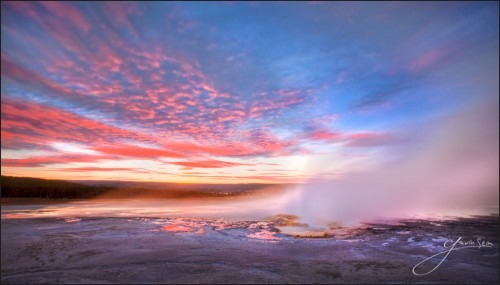
Most rules are universal to photography of any style or any experience level. Of course these rules are meant to be broken, but general concepts help us stay on track and we should only break rules for good reason. These are some tips I keep in mind with my own work. Hope they give you a few reminders. When your done here some join us in the forums to get some personal feedback. OK let’s roll.
- One primary subject. If you have more, you’ll have distraction.
- Omit needless objects. Getting them out will clean up your scene.
- Slow down. Many images are ruined because of RTC (Rush To Click).
- Tonal control is essential. Use the Zone Scale, Burn & Dodge.
- If a background detracts from your scene, change or carefully blur it.
- See Light. Where’s it coming from, how can you use it.
- Learn the rules photography. Then you’ll break them for good reason.
- Don’t just center things. Use the rule of thirds & others. They work.
- Eyes. Watch close, keep them sharp. They hold emotion.
- Use the Magic Hour. Around sunrise/sunset, light happens.
- Keep it sharp. Watch your shutter speed & subject movement.
- Space is valuable in a frame, keep clutter away with comp & tonal control.
- Harsh sun can be bad. Learn to manipulate it and find good light.
- Shadows are critical. Without them the light gets ignored.
- Great images start in camera. But don’t underestimate careful editing.
- Use fresh ideas, but also go for those old reliable images.
- If the weather is foul, it doesn’t mean the photos will be.
- Lines lead the eye. Pay attention to where they go and intersect.
- Change hours. Different times of day will transform a scene.
- Think about shadows and dimension. Flat light is usually boring.
- Motion Blur can be very powerful, but use it carefully.
- Take time to really LOOK at your subject before releasing the shutter.
- Study. Photography has 150+ years of history. Go learn about it.
- Remember… Slow down, refine, simplify. Analyze your scene.




Over 5000 Facebook Fans say it best. Seim Effects Tools set the standard.

Use Promo Code PPS to save 15%


Great reminder of what is really important in our images, reduce reduce reduce, and then reduce some more!
I really liked this post,
Thanks CW
Great tips! As a wedding photographer I fully agree that simplicity is at the heart of great images! It is so easy to get caught up in everything that is going on at weddings, but without the simplicity in the photo you loses its impact.
Simplicity can show the complexity of an image
This is a great post. A lot of useful tips.
Great list Gavin
• Simplicity is key, if it does not help the photo, get rid of it. The greatest logos are most often very simple. Photos can be too.
Here are a few more:
• Moment, expression, timing are key.
• Know the rules, then you can know when to break them.
• You control everything in every photo, because you choose the moment to click the shutter.
• Few of us can master everything at once. Take one thing at a time as you move along your learning curve.
• Blur is forever, noise can be dealt with.
• Missed focus = missed opportunities.
• Work the angles. Standing flat-footed gets boring.
• Enjoy it! If you don’t, who will?
Great tips and it gives me a super idea. I’ve been saving up for new backgrounds for my home studio, but my walls are purple in one room and red in another. Bold colors ehh?
Purple and red could be a killer background. Throw the color out of focus for softness and hoot away.
Gav, AGAIN, you keep it so simple, even a cave man…er novice photog like me can make sense of it. THEN…you inspire with your images. Thanks a million from me and the youth that I serve. Aloha, t-
Thanks Troy (and everyone) for the kind words. Simplicity is often so simple we overlook it.
I went to NYIP and this is what they emphasize the most as well.. Simplicity
Great Tips! Keep it simple.
Excellent tips, thanks Gav!
I understand the Rule of Thirds, but ironically, most of the example pics here don’t use it. Not saying you should have, just that some times, it doesn’t work for the type of picture you’re trying to create. Just sayin’
Fill the frame is one of my favorites, you simply go to steps closer to the subject and your scene changes dramatically.
I love getting close to my subjects, like your shot of that bridge (using a wide), or by using long lenses, while I find most landscape shots pretty boring, unless it is a spectacular landscape, but then you’re in the landscape, getting close!
Your advice could be taken as the golden basic rules, but I would add one more: Keep ISO low, to get maximum dynamic range, and least noise!